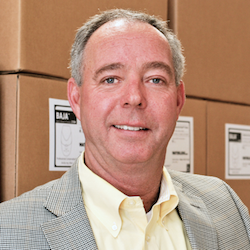
When we talk about water shortages and droughts, the conversation typically involves what water restrictions have been requested of the local citizenry, are already imposed or may be imposed on citizens and businesses.
In almost all cases, we find that most people can carry on and abide by the requests or demands to reduce water consumption. Some people, however, find it more difficult to cope with water restrictions. Further, they can become emotional over such restrictions, getting angry if they see someone disregarding the restrictions, or deciding not to honor the restrictions themselves as a way to demonstrate their independence from local governments or conditions.
Dealing with water restrictions can be especially difficult for older people, many of whom are living in or using senior living facilities.
Because of all the adversities they have experienced – the Great Depression, the Dust Bowl of the 1930s and World War II and other wars – many of today’s older adults have developed a much more independent, stoic way of life. Although all of this stoicism is admirable, it can and often does take a toll on the mental health of people, especially older adults, who may find it much more difficult to carry on with less water and may be reluctant to change their water-consuming ways.
Change they must, however. If, for instance, the older adults live in a senior housing or care facility and water restrictions are in place for the entire community, then everyone will have to carry his or her own weight, so to speak — staff members as well as residents.
So how can we make things easier for them? Executive directors and administrators can take the following three steps:
1. Education
Older adults must be educated as to why they are being asked to change their water consumption, especially if the change won’t be fleeting, as people are likely to assume.
Our country has seen instances in the past. In 1977, for instance, California experienced a one-year water shortage. By 1979 and more-than-average rainfall, however, it was all over and out of mind.
Jump ahead to 2014, and the state was in just as bad of shape, but this time the shortage lasted four years. Moreover, some experts have predicted that this would be the “new normal” when it comes to water conditions in the state and other parts of the country as well.
So executive directors and administrators must educate the residents in their care that water shortages are real, they may last for years and everyone must do his or her part to help supplies last.
2. Faith
We must give residents faith that the water-reduction burden is not just on their shoulders but that the facility itself is finding ways to reduce consumption. One of the best ways to accomplish this is to assure residents that new technologies are coming online that can help everyone in the community use less water.
Sometimes these technologies are straightforward. A traditional shower head uses approximately four gallons of water per minute. Install an aerator and it is now using 2.5 gallons per minute or less.
As to more involved technologies, droughts and water shortages may cause executive directors and administrators to consider transferring from traditional toilets and urinals to high-performance toilets that use less water than is federally mandated — or no-water urinals, which use no water at all.
3. Realization
Finally, executive directors and administrators must recognize that droughts can take a severe toll on the mental health of their residents. Although the two aforementioned steps can help ease the situation, much more may be necessary. Mental health facilities and resources must be available to those affected by drought.
Mood disorders caused by droughts can and have caused physical illness, and to a lesser extent, violence and even suicide. Mental healthcare workers can help prevent such responses.
A frequent speaker and author on water conservation issues, Klaus Reichardt is founder and CEO of Waterless Co. Inc., based in Vista, CA. Reichardt founded the company in 1991 with the goal of establishing a new market segment in the plumbing fixture industry with water efficiency in mind. Along with the Waterless No-Flush urinal, the company manufactures other restroom and plumbing-related products.




